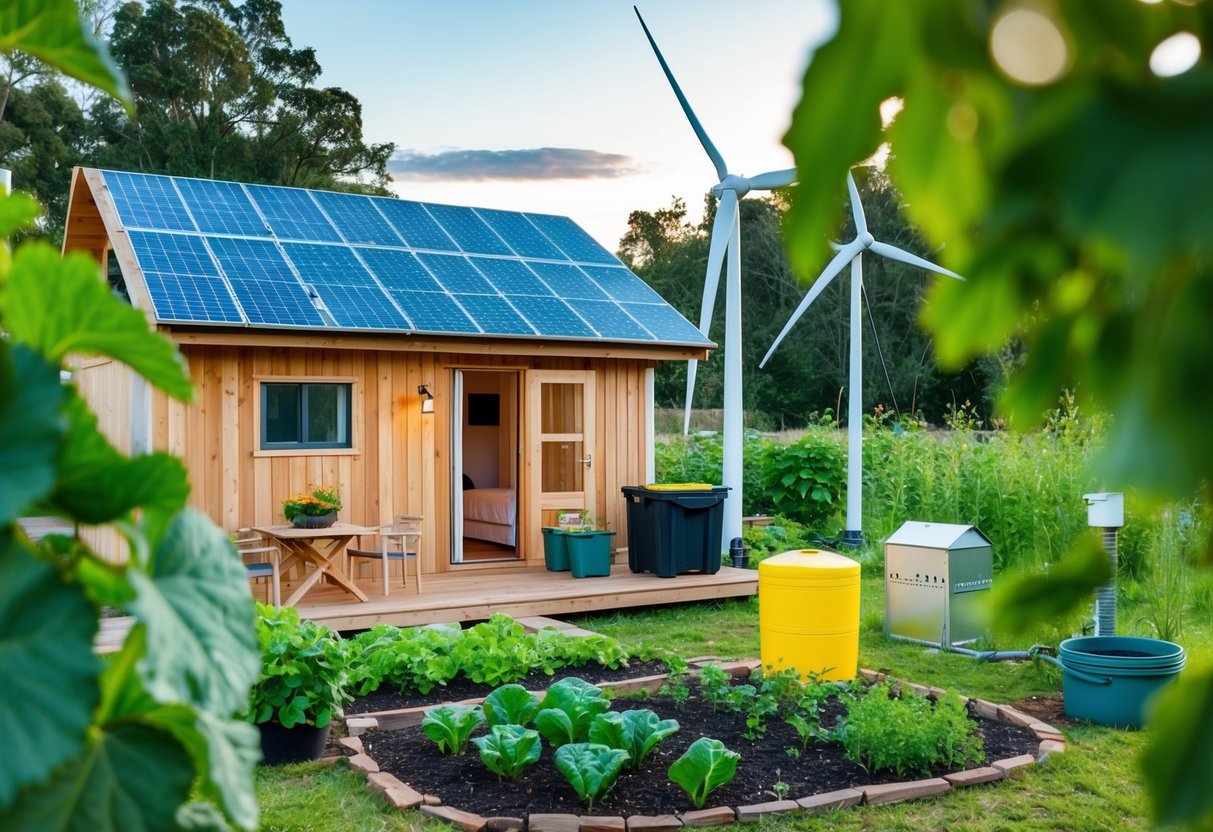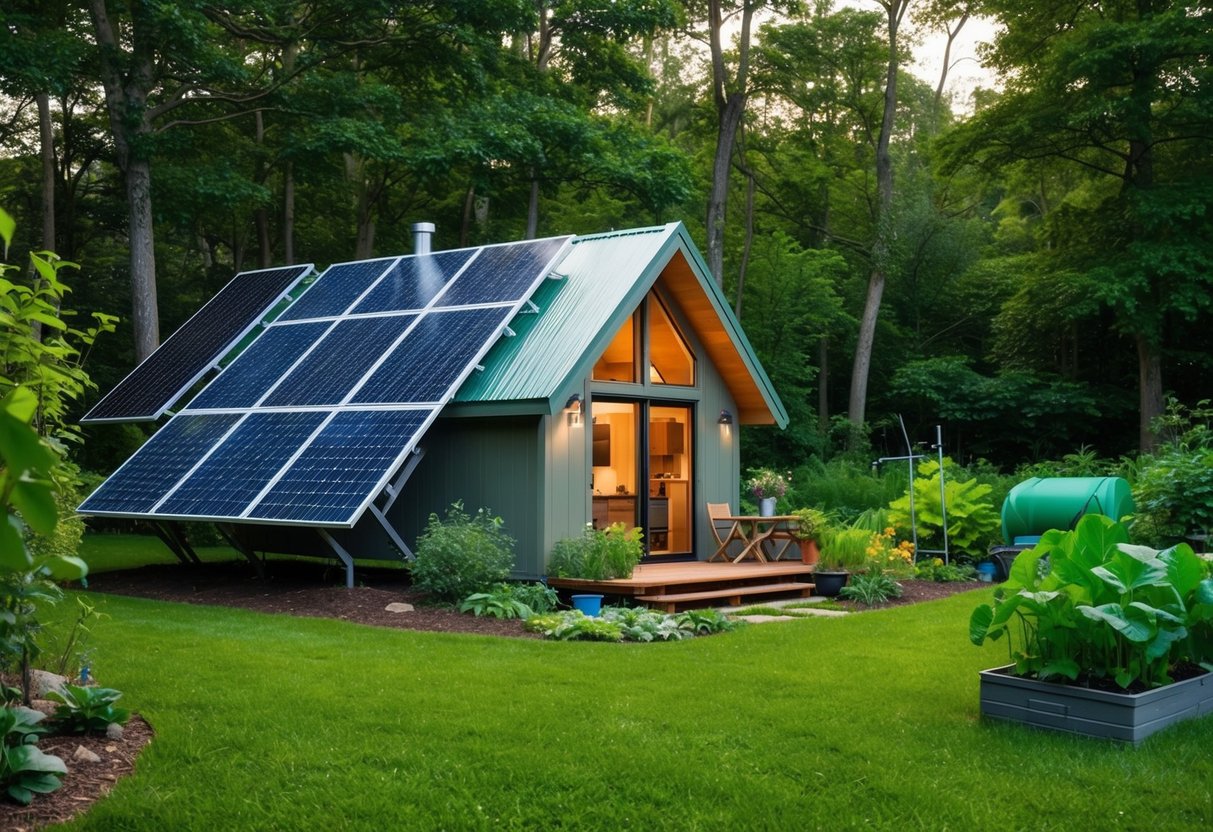DIY Off-Grid Living: Top Tips for Setting Up Your Sustainable Life
Energy Solutions for Off-Grid Living

Transitioning to a self-sustaining lifestyle often involves embracing renewable energy sources to power homes independently. Solar power and other alternative energy options can offer both environmental and financial benefits.
Harnessing Solar Energy
Solar power remains a fundamental choice for many pursuing off-grid living. Installing solar panels is often the first step, as they can convert sunlight directly into electricity, offering a degree of energy independence. A typical solar power system includes photovoltaic panels, an inverter, and batteries for storing excess power. Location plays a critical role; areas with prolonged sunlight exposure maximize the system’s output. It is important to consider panel efficiency, cost, and installation when planning a solar system. Maintenance typically involves keeping the panels clean and ensuring components are functioning correctly. For many, solar energy can be a reliable and sustainable source of power when designed appropriately for their needs.
Exploring Alternative Energy Sources
While solar energy is popular, other renewable energy sources can complement an off-grid lifestyle. Wind turbines, for example, harness wind to generate electricity. Suitable for regions experiencing strong and consistent winds, wind energy can be a viable option. Additionally, hydroelectric power can be utilized when a property has access to a flowing water source. Both wind and hydro systems require careful planning—weighing factors like location, climate, and initial investment costs. Combining multiple energy sources often enhances reliability and reduces dependency on a single system, making energy generation more adaptable to varying environmental conditions. This holistic approach ensures continuous access to energy and improves overall sustainability.
Building for Efficiency and Sustainability

Designing a home with attention to energy efficiency and sustainability can greatly reduce its carbon footprint. Prioritizing insulation and selecting sustainable building materials are key steps in achieving these goals.
Insulation and Energy Conservation
Proper insulation is critical for minimizing energy waste. Effective insulation helps maintain comfortable indoor temperatures, reducing the need for heating and cooling systems. Selecting materials like cellulose, made from recycled paper, or wool, which is a natural insulator, can optimize energy efficiency. Building codes often mandate certain insulation standards, so it’s essential to be aware of local regulations. Sealing gaps around doors and windows further aids in conserving energy, creating a more sustainable living environment. Additionally, investing in high-quality windows designed for thermal efficiency enhances the overall insulating capabilities of a home. Focusing on these aspects can lead to significant energy savings over time.
Choosing Sustainable Materials
Sustainable materials are a cornerstone of eco-friendly building. Wood certified by the Forest Stewardship Council (FSC) ensures responsible forestry practices. Using recycled steel reduces the need for new resources while providing a durable structure. Bamboo is another excellent option due to its rapid growth and renewability. Low-VOC paints and finishes contribute to healthier indoor air quality and minimize environmental impact. Considering locally sourced materials can also decrease transportation emissions, further lowering the home’s carbon footprint. Builders should aim for a balance between durability, resource availability, and environmental impact to create a truly sustainable home. These choices contribute to both the long-term resilience and environmental responsibility of the construction.



